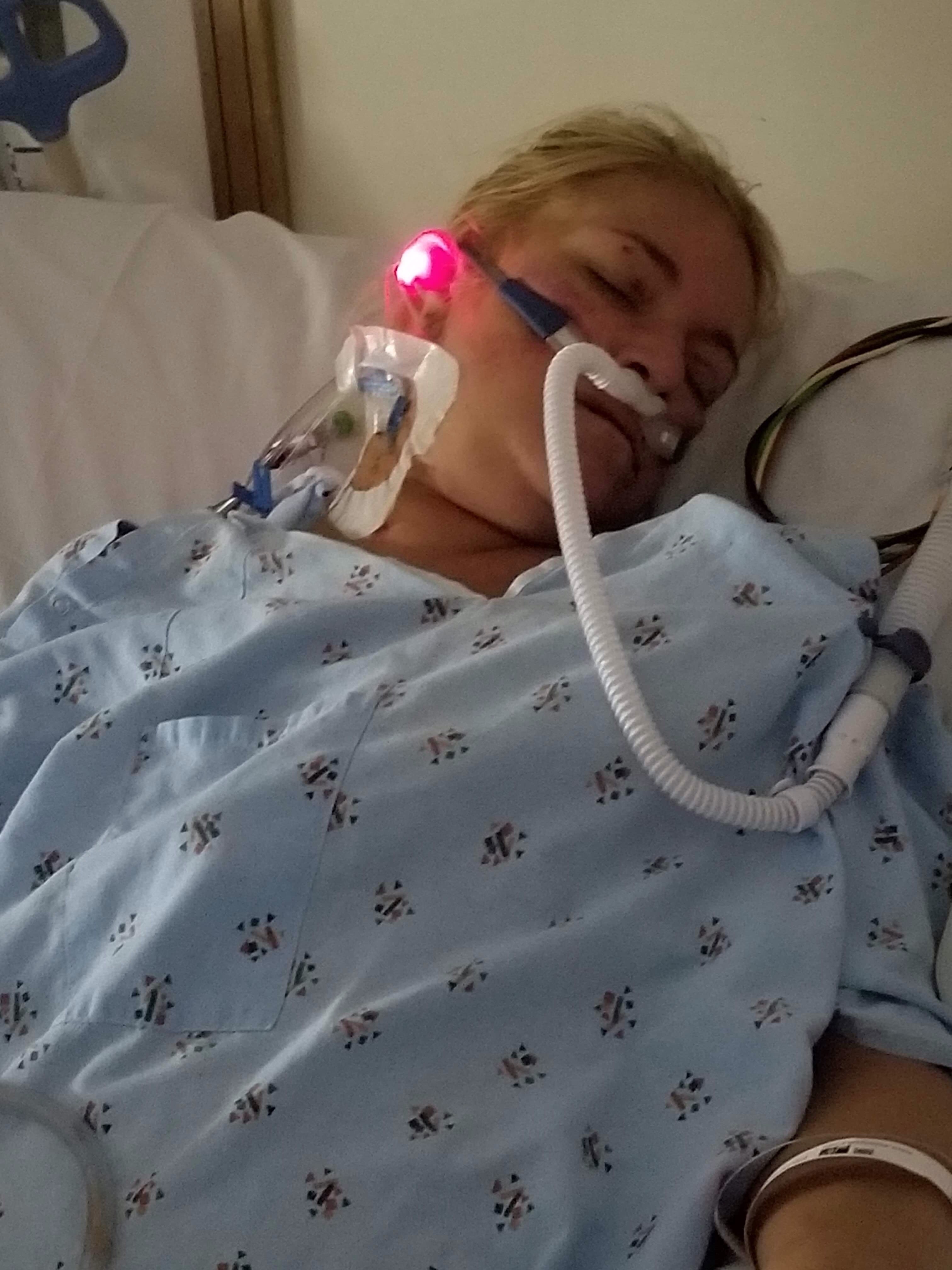
Guest Writer
July 21, 2018
Dana has been in and out of consciousness since she was first sedated for the intubation. The vasopressors have turned her fingers and toes even more purple than when she was brought in to the emergency room and they were bluish. At one point she had four vasopressors running into her body via IV. These vasopressors keep her heart rate from plummeting too low and they clamp down the blood vessels running to her extremities so that her brain and internal important organs have a good flow of oxygen.
My notes from Messenger:
9:30 a.m. Spoke to the kidney doctor who seemed to think her kidneys are okay and that she won’t need dialysis. Her numbers look good (oxygen, heart rate, blood pressure). The blood flow is returning to her hands and feet. Her urine flow is good. The nurses were turning her over so we stepped out.
12:53 p.m. They are giving her more Lasix. They are working on a nutrition plan for her. Her oxygen level fell after they moved her. But it was at 100 percent when I left. She was agitated and trying to communicate with the oxygen tube down her throat so they gave her a short-lasting sedative, something that would clear out quick.
5:31 p.m. Her blood pressure is dropping.
8:58 p.m. BF wrote: They lowered the oppressor to 6 from 10. Her blood pressure is 108/76. Oxygen is 96. Heart rate is 107. Dopamine was dropped down to 2 again.
NOTE: This info is from WebMD.com. The monitor with all the wires attached to Dana provided the numbers for her heart rate (typical healthy adult beats 60 to 100 times a minute); blood pressure (top number is systolic pressure and should be between 100 and 130, and bottom number is diastolic and should be between 60 and 80); respiration (resting adult typically breathes 12 to 16 times a minute); and oxygen saturation shows how much oxygen is in your blood on a scale up to 100 (typically 95 or higher, anything below 90 means your body may not be getting enough oxygen). The monitor would flash and sound a warning when levels dropped below normal. “One of the most common reasons an alarm goes off is because a sensor isn’t getting any information. This might happen if one comes loose when you move or isn’t working the way it should.” That often happened to Dana because the sensor was at times clipped to an ear or a nostril. Later, when she was not sedated, it occasionally was clipped to a finger. The sensor often slipped no matter where it was placed.
During the early days of her hospitalization, in addition to being sedated, Dana was in restraints so that she wouldn’t pull the oxygen tube out of her throat or any of the wires.
10:14 p.m. BF wrote: They are thinking of shutting down the dopamine as a trial.
NOTE: Dopamine is a vasopressor.
10:41 p.m. BF wrote: Okay, they are putting the dopamine on hold to see what happens. Her blood pressure dropped to 97/58 with the oppressor IV turned off.
NOTE: The MayoClinic.com site states: “Most doctors consider blood pressure too low only if it causes symptoms. Some experts define low blood pressures as readings lower than 90 systolic or 60 diastolic. A sudden fall in blood pressure can be dangerous.”

